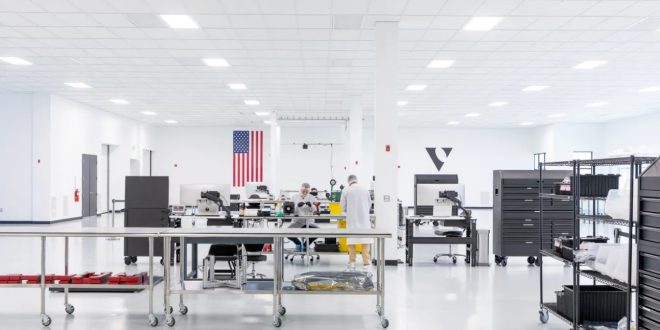True Anomaly, a defense-focused space technology startup, received regulatory permits to demonstrate imaging and rendezvous on-orbit for the first time.
The NOAA and FCC authorizations allow the company to perform non-Earth imaging and demonstrate in-space rendezvous proximity operations. In a mission early next year, True Anomaly will use two Jackals “autonomous orbital vehicle” spacecraft to demonstrate these capabilities.
The 275-kilogram Jackal spacecraft will launch on SpaceX’s Transporter-10 rideshare mission in February 2024. True Anomaly had planned to launch on Transporter-9 in October, but CEO Even Rogers told that supply chain issues forced them to delay.
When building new systems, “Sometimes there are pressures that you experience across the supply chain,” he said. “We had some delays and then it got tight.”
The startup also opened its first factory, 35,000-square-foot “GravityWorks,” in Centennial, Colorado. A manufacturing method similar to car assembly will allow the new facility to produce a spacecraft every five days.
He said, “We’re not trying to commoditize spacecrafts.” “There are some great companies trying to make spacecraft cheaper and faster, but we’re focused on national security and securing the space domain from threats.”
True Anomaly, founded by four ex-Space Force members last year, wants to sell the Pentagon defensive technology like Jackal, a “autonomous orbital vehicle” to protect American assets in space and spy on adversaries. The company has raised $30 million, including a $17 million Series A this year, for its tech.
True Anomaly CEO Even Rogers described a “information asymmetry” between the U.S. and its space adversaries in a interview. The company wants to close that gap by building spacecraft that can rendezvous with other orbital objects and capture close-up images.
The company will also train U.S. warfighters virtually and with the Jackal on orbit. True Anomaly launched a digital and “on-orbit range” service last month to realistically replicate threats and train and test tactics.
Rogers said the company plans to launch more hardware lines and place “potentially hundreds” of spacecraft in every orbit, including cislunar.
 Tech Gadget Central Latest Tech News and Reviews
Tech Gadget Central Latest Tech News and Reviews




